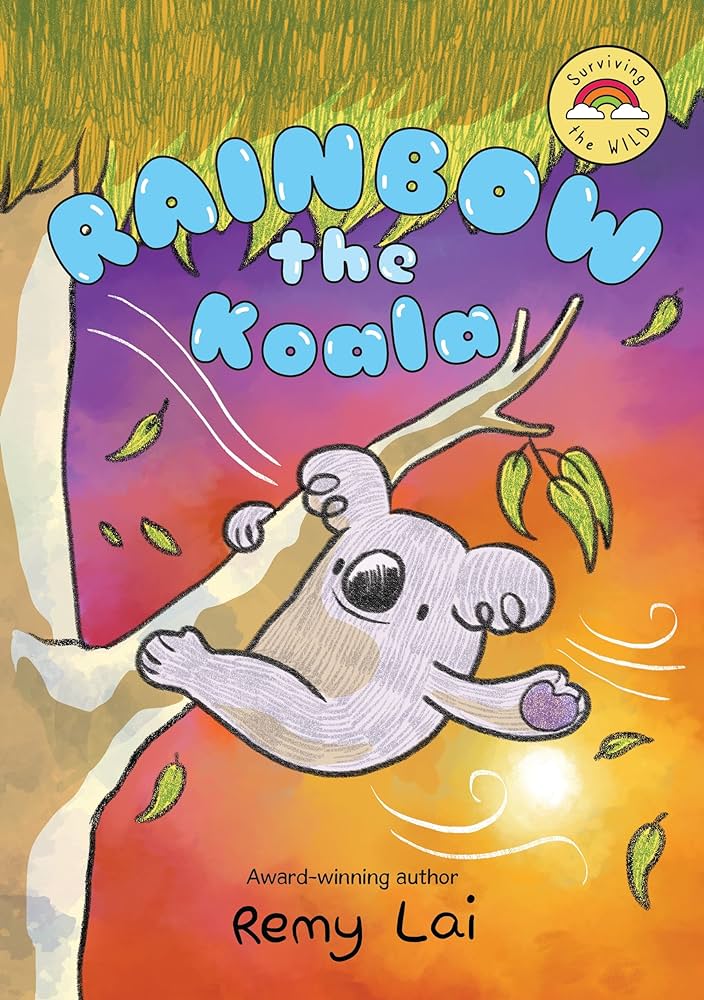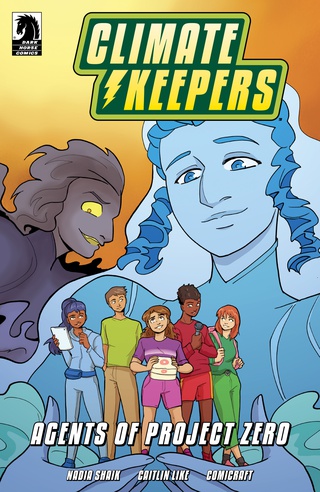“People often came to Alaska that year because they knew it might be one of their last chances to see this endangered species. As global warming melted the ice and changed the climate, the bears’ food became scarcer. So the bears were forced to feed on whatever they could find…” – Waluk, p. 24.
| Creator(s) | Emilio Ruiz (author), Ana Miralles (illustrator), Dan Oliverio (translator) |
| Publisher | Magnetic Press |
| Publication Date | 2013 |
| Genre | Animal, Fiction |
| Environmental Issues and Themes | Climate Change, Melting Ice Caps, Endangered Animals, Anthropomorphism, Fossil Fuel Extraction, Hunting |
| Protagonist’s Identity | Nonhuman (Animal), Male |
| Protagonist’s Level of Environmental Agency | Level 3: Moderate, Plot-Driven Environmental Agency |
| Target Audience | Middle Grade |
| Setting(s) | Arctic |
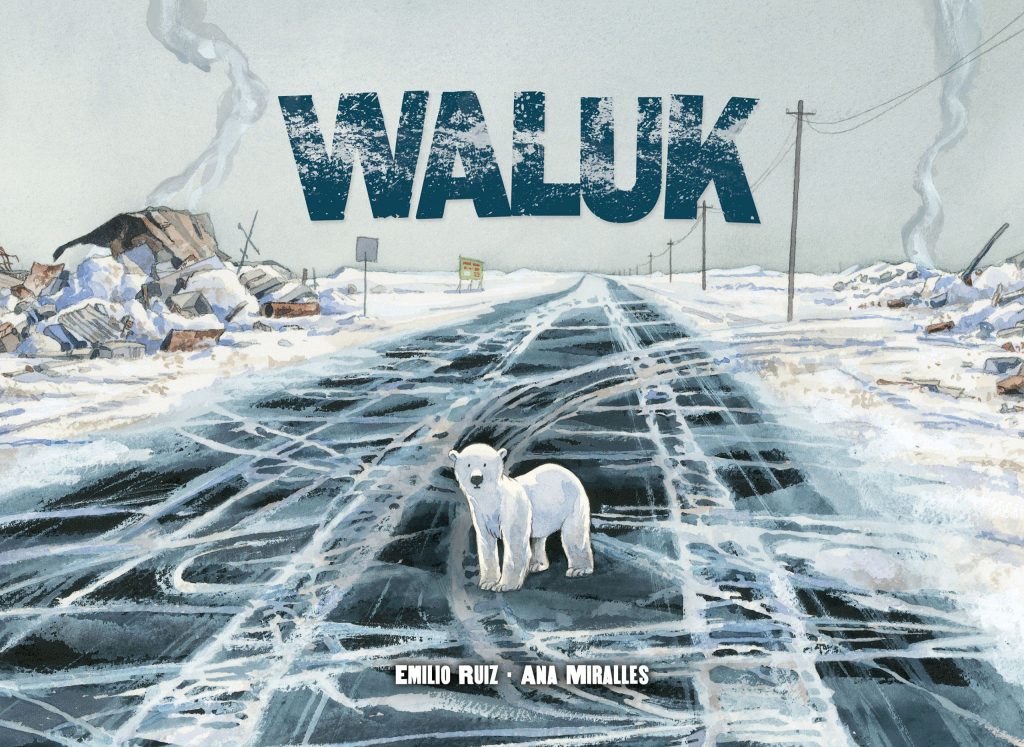
Environmental Themes
Originally written in Spanish, this comic features Waluk, an anthropomorphized young polar bear who is abandoned by his mother. Alone and starving, Waluk wanders through an Arctic landscape ravaged by climate change. He befriends an old bear named Manitok who teaches him how to hunt and about Nanook, a mythical bear worshipped by the other polar bears. Waluk and Manitok’s path intersects at numerous point with human tourists and researchers who feed the bears.
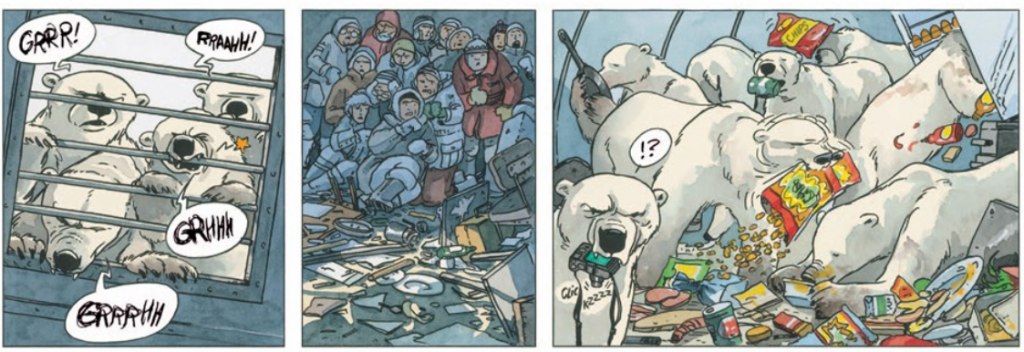
Eventually, the starving bears wander into a town dump to scavenge food. There, human researchers capture Manitok in a bear trap and transport him to their research station. The humans decide to euthanize the bear based on his advanced age and lack of teeth, believing that he will soon starve to death if they release him. However, Waluk has a vision of Nanook, who inspires him to rally the other polar bears together. The animals break into the research station and rescue Manitok. Despite the comic’s emphasis on the perils of climate change and habitat destruction, the narrative inexplicably concludes with the bears living happily in an apparently unmelted Arctic. In the comic’s final lines, Ruiz writes, “Waluk and Manitok wandered for many years together through the tundra and across the ever-frozen seas… Waluk became a living legend himself, who is still talked about all across the frozen north” (50).
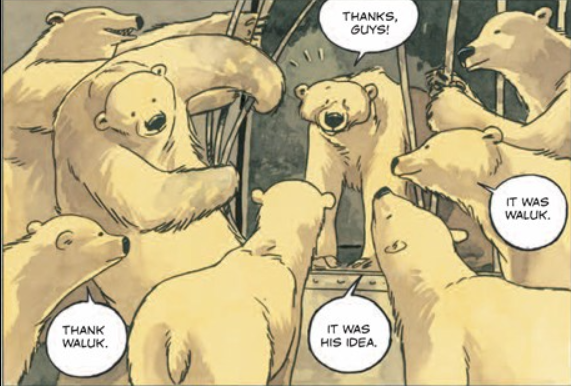
Paratexts
The comic includes a paratextual three-page section entitled “Are Polar Bears in Danger?” This educational note teaches readers about threats to polar bears, including increased contact with humans, global warming, disappearing sea ice, and oil and gas drilling. The section concludes by listing three informational websites and encouraging readers to educate themselves about the species, stating, “There are many organizations that are working to protect polar bears and the Arctic region. Check out these websites to learn how you can help!” (Ruiz, n. pag.)
Additional Resources
MacMillan, Graeme. “How Polar Bear Tale ‘Waluk’ Brings Climate Change to Life.” The Hollywood Reporter, 12 November 2020, https://www.hollywoodreporter.com/movies/movie-news/how-polar-bear-tale-waluk-brings-climate-change-to-life-4091820/.


